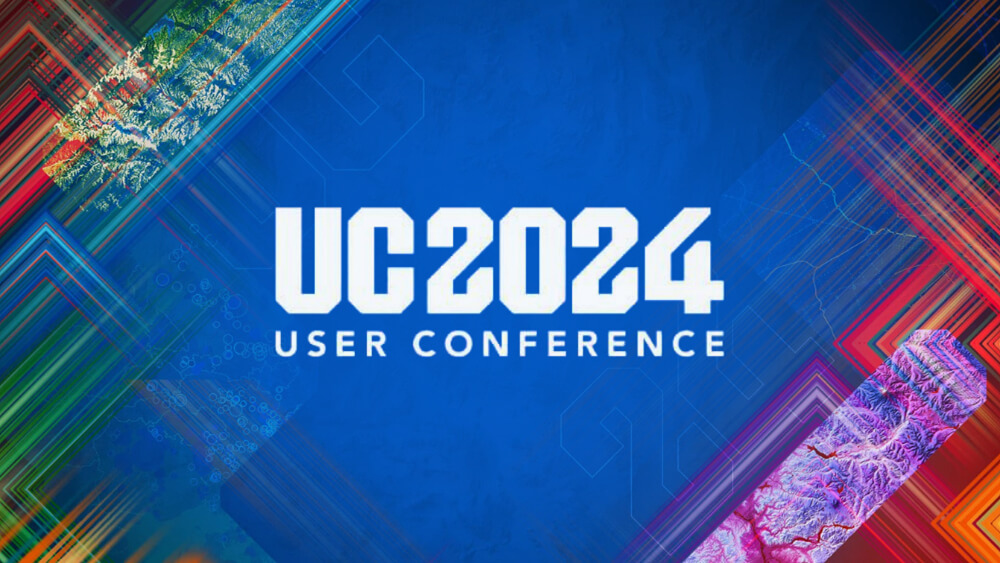The highly anticipated Esri User Conference, known as the world’s largest GIS gathering, took place in sunny San Diego last month. Drawing professionals from across the globe, this event provides the ultimate platform for gaining an accurate understanding of the latest advancements in GIS and engaging with fellow industry experts.
Our GIS consultants made the most of this opportunity, gathering a wealth of insights from in-person discussions with dozens of clients and partners on the most talked-about topics in the field today.
Geocoding, the new Data Pipelines solution, and the integration of ArcGIS with Microsoft 365 are subjects that have piqued the curiosity of our clients, fueling many of our conversations. Motivated by these discussions, we’ve decided to dive deeper into these key areas.
Without further delays, let’s dive into the key takeaways from this year’s edition.
Jumpstart your automation with ArcGIS Data Pipelines
Let’s face it: managing time-consuming data preparation tasks can feel like an endless grind! As datasets grow increasingly complex and abundant, it can be hard for organizations to implement and maintain an up-to-date GIS infrastructure.
As a result, there’s been a growing demand for automation and integration solutions. At Consortech, we’ve long advocated for the benefits of adopting low-code tools to cope with these automation challenges. It was exciting to see this enthusiasm reflected at the Esri User Conference, where ArcGIS Data Pipelines caught everyone’s attention.
With more applications in use than ever, the need for smooth data flow between tools is vital, and Esri has risen to the challenge, consistently upgrading ArcGIS Data Pipelines to cater to our industry’s changing landscape.
Although it’s a relatively new tool, it’s user-friendly design sets it apart as an excellent starting point for automation in your ArcGIS environment. Many organizations will find its simplicity not only accessible but also a valuable gateway to streamlined processes and enhanced efficiency.
ArcGIS Data Pipelines 101
ArcGIS Data Pipelines represent a user-friendly opportunity to create simple, efficient ETL processes within the ArcGIS Online ecosystem. The low-code options further simplify data transformation and combination, making it accessible for users with minimal coding knowledge.
ArcGIS Data Pipelines key features include:
- User-friendly, drag-and-drop interface
- Compatibility with vector data and tabular data
- Connectivity and data extraction from various sources (Amazon S3, Azure Blob, or Google BigQuery)
- Data building, data transformation, and seamless feature layer updates in ArcGIS Online without complex Python scripts
- Support for additional input file formats, new scheduling options, and more in the latest updates (June 2024)
ArcGIS integration with Microsoft 365
During the Esri UC, our team attended sessions dedicated to ArcGIS for Microsoft 365 and were thrilled to discover new ways this integration can enhance our clients’ workflows.
This suite of integrations bridges the gap between non-GIS users and the world of geospatial data, making it accessible to a wider audience. The live demonstrations confirmed its potential, showcasing exciting new capabilities that we can’t wait to implement.
About ArcGIS for Microsoft 365
With the motto “Connect spatial and business intelligence,” ArcGIS for Microsoft 365 provides location capabilities within familiar applications: Excel, Power BI, SharePoint, Teams and Power Automate.
It offers valuable insights for analysis, asset management, customer service, and sales processes. Users can create, share, and automate business workflows with ease!
Esri UC attendees are eager to elevate their geocoding results
Geocoding integration used to be a complex challenge for many organizations, but not anymore! Innovative techniques such as batch address grouping, point address assignment, and anonymization particularly resonated with us, as they offer powerful ways to improve accuracy and efficiency.
Some of our clients will be happy to test new geocoding limits in projects.
Geocoding with ArcGIS allows you to:
- Find and visualize locations: Addresses and places can be shown on a map or used as stops for routes.
- Convert addresses: Transform addresses or places into x,y coordinates and append them to database records.
- Batch geocoding: Process multiple addresses at once.
- Reverse geocoding: Find addresses based on x,y coordinates.
Esri UC 2024: Exciting innovations on the horizon
Needless to say, the Esri User Conference left attendees buzzing with inspiration and excitement for the future of GIS. Beyond the topics discussed here, advancements in AI, digital twins, and LiDAR technologies were also generating significant buzz.
At Consortech, we thrive on the inspiration and insights gained from events like the Esri User Conference. Our team of GIS experts and developers is dedicated to continuously updating our practices and inspiring our clients. These innovations provide a robust toolkit for tackling today’s challenges, enabling us to better address your ArcGIS development needs, provide a strategic vision to align your projects, and help you deliver more with ArcGIS.
We eagerly anticipate the next Esri User Conference, where breakthroughs will continue to push the boundaries of technology!
Deliver more projects with ArcGIS. Consortech can take care of your development needs and provide a strategic vision to bring all of your projects into alignment.

